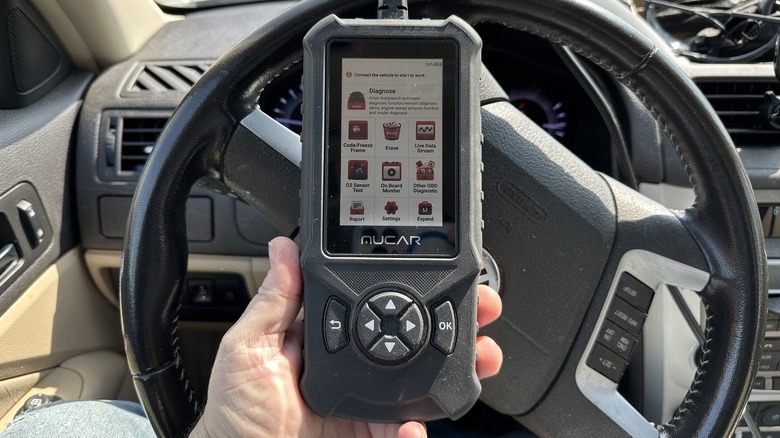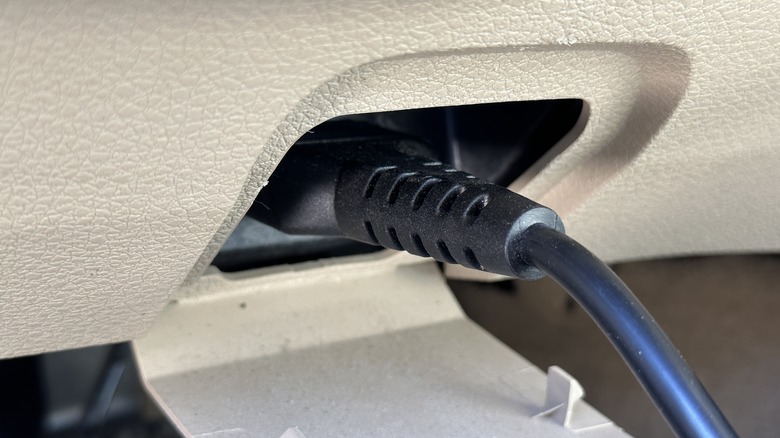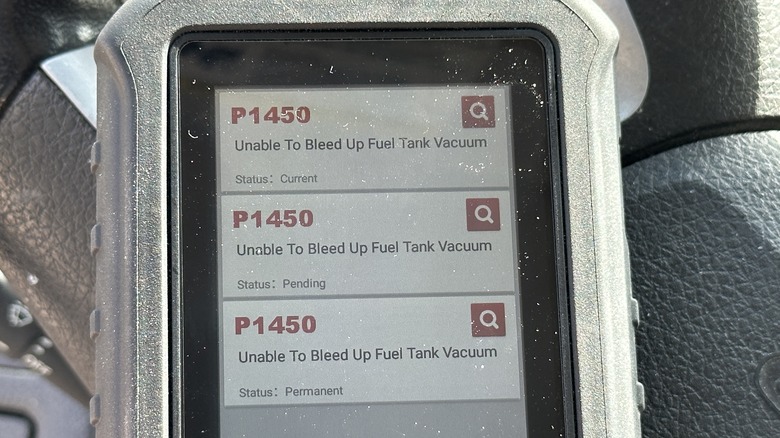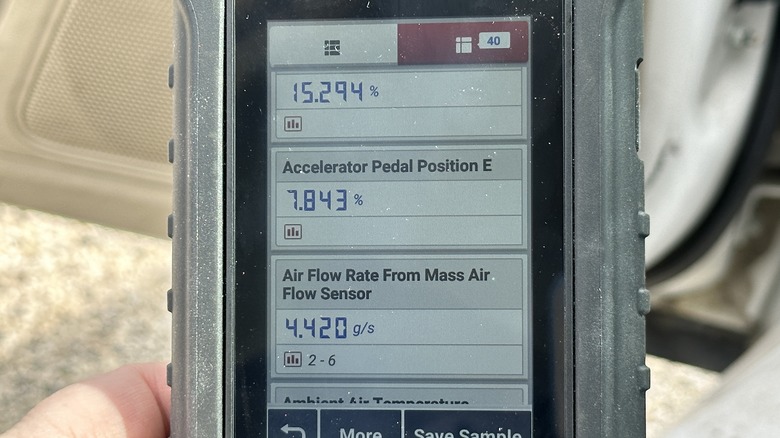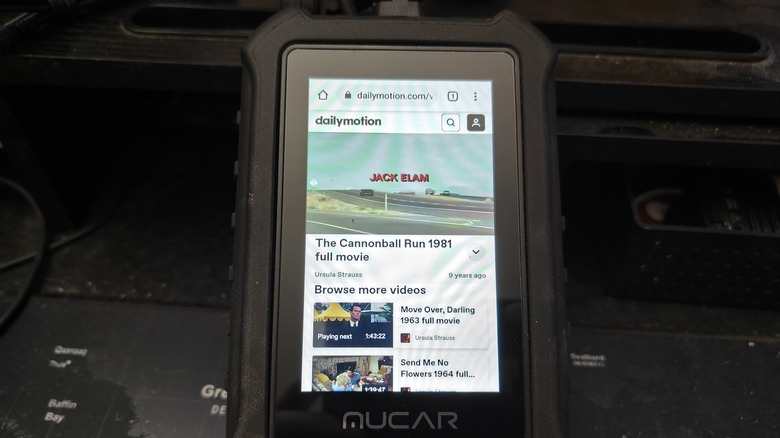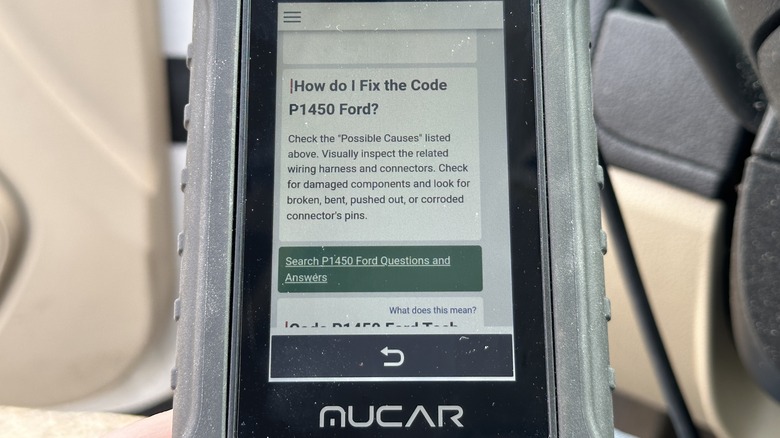Mucar CDE900 Review: An All-In-One Device That Diagnoses Your Car Issues Via ODB-II
- All-in-one solution
- Built-in browser can search for fixes
- Easy to use
- Glove-friendly
- No speakers
- OBD-II cable doesn't detach
- A little slow
Take a look at the gauge cluster of your car or truck's dashboard and hopefully, you won't see any lit-up icons. However, there is always a chance that something is going wrong with your car, and those lights will tell you what it is. And yet, the dreaded and always vague "Check Engine" light persists.
What a check engine light can mean is anyone's guess. You might have something going wrong with the exhaust system, the battery, or any of the dozens of other components that make your car go. For most automobile owners, the best way to figure that out is to head to your local mechanic or auto parts store. Often they can run those codes for you, and tell you how to fix them.
Or you can get an ODB-II scanner like the Mucar CDE900 and have it tell you what's going on. I've been using a Mucar CDE900 review sample provided by Mucar for two weeks, and this is my full review.
Connect and go
The Mucar CDE900 connects to your car's ODB-II port to read what's going on with your engine. All gasoline and alternate fuel cars from 1996 and on have been required to have an OBD-II port, so there's a solid chance yours does too. The Mucar scanner has a built-in, four-foot cable that connects to the port and allows you to easily read it. It has a 4-inch touchscreen and runs on a highly-skinned version of Android 6.0. Inside is a 1,500 mAh battery that Mucar says is good for three hours of diagnosis, which seems consistent with our testing.
The case of the Mucar is ruggedized rubber and plastic. There's a power button on the right side. Below the screen is a four-way rocker button, along with an OK and back button. The device is touch-enabled, but the buttons make it easy to navigate if your hands are dirty or gloved, either of which tends to happen when one is working on cars. At the very button is a hard plastic port cover that protects the USB-C port and microSD card slot so you can pop in one of the best microSD cards.
Overall the whole device feels very sturdy and lightweight. It can take a punch. The OBD-II cable is built-in and doesn't disconnect which could make this hard to store in a toolbox, but the ODB-II port comes with a plastic cap to protect it.
All-in-one solution
One of the coolest parts about this scanner is that it's an all-in-one solution. If you look on Amazon, you'll find all manner of readers, many of which work with Bluetooth and connect to your phone where an app gives you readout information. Some others have a small built-in screen that will display the code. But the real power of this device comes in its all-in-one solution package.
Bluetooth readers can connect to your phone, but the app ecosystem is not great. You need to find specific apps that pair with your specific Bluetooth reader. On the other end of the spectrum, the readers that just display a code, don't really help you diagnose or actually fix the problem.
That's what makes this device compelling — It can read your engine codes and point you in the right direction toward fixing them. Since this device is Android, it has a web browser built-in. After it reads the codes, it helps you do what you were going to do anyway — search the web for a solution. From there you can tap on solutions and go to web pages or YouTube videos that can show you how to solve the problem.
The one downside is that this reader doesn't have speakers, so if you click on a YouTube video, you won't be able to hear it. That's a pretty glaring omission on this device, and it's the biggest strike against it. It's understandable why there wouldn't be a speaker here, but if the idea was "let users Google the problem" the designers should have realized that videos would almost certainly be a part of the solution. In short, this was a corner that should not have been cut.
More than codes
If that's all the device did, it would already be pretty cool, but it's not. There is a ton of functionality in there that allows you to test various components of your car. For a one-time $39.99 purchase, you can unlock the ability to read your Engine Control Module (ECM), Transmission Control Module (TCM), Anti-lock Breaking System (ABS), and Supplemental Restraint System. The subscription stays unlocked forever.
On top of all that, you can get real-time data from your car's engine like the Accelerator Pedal Position, AirFlow Rate from Mass Air Flow Sensor, and more. In the hands of a data nerd, this could all become dangerous. Additionally, in the pull-down menu, you can capture screen recordings and screenshots so you can keep a record of your data. There's 16 GB of onboard storage for storing all that. The pull-down menu also allows you to email support if you need to, so it's like an always-available helping hand which is a nice touch.
Other test notes
The device also comes with Wi-Fi and a fully functioning web browser, so you can visit other websites if you need to. There's no cellular connectivity though, so if you're not at home, you'll need to fire up your phone's Wi-Fi hotspot to get any kind of solution. The device can read codes without a data connection, but at that point, it becomes just another code reader. The real power here is unlocked when you can surf the internet.
That fully-functioning web browser can be fired up even when you're not scanning codes. You can go anywhere you want, and even surf SlashGear or YouTube if you feel so inclined, but remember, there are no speakers so any videos you watch will be silent films.
The device has a built-in photo gallery and file manager so you can use that to peruse your screenshots without having to transfer them to another device (like a notebook computer or tablet). Also, the device itself is a bit on the slow side — you don't get the latest Snapdragon processor here. The touchscreen can also be a little finicky and not terribly responsive.
One thing that is desperately missing is a home button to get you back to the start screen. It's easy to get several steps into the web browser before you want to start over. A Home button would nicely facilitate that rather than mashing the back button over and over again.
Wrapping it up
Overall, this is a great little device to add to your toolbox. It gives you an all-in-one solution for diagnosing and putting you on the path to fixing your car if something is going wrong. Additionally, if you're a gearhead, this device can give you insight into how your car is performing, including real-time data. Normally, the Mucar CDE900 goes for around $130, but at the time of this writing, it can be had for as little as $65 which is a pretty great deal.
For someone who is not a car person, this can save you a trip to the auto parts store and possibly some embarrassment for having to ask for help in the first place. For a seasoned car person, this can up your tinker game by allowing you to dive into what your engine is actually doing at the time. For the price, you're getting a lot of value and convenience. There surely is room for improvement in the device itself, but for everything this device offers, it's easy to recommend.
